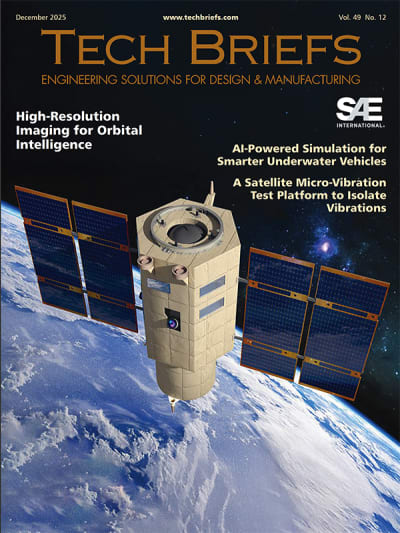
Researchers have developed a tiny magnetic robot that can take 3D scans from deep within the body and could revolutionize early cancer detection.
The team, led by engineers from the University of Leeds, said this is the first time high-resolution three-dimensional ultrasound images taken from a probe deep inside the gastrointestinal tract, or gut, have been generated.
It paves the way to transforming the diagnosis and treatment of several forms of cancer by enabling ‘virtual biopsies’ — noninvasive scans that provide immediate diagnostic data. These scans allow doctors to detect, stage, and potentially treat lesions in a single procedure, eliminating the need for physical biopsies.
The perhaps surprising key to the team’s success was using a little-known 3D shape, the oloid. This gave the magnetic medical robot a previously impossible range of motion — the roll, essential for precise navigation and imaging inside the body.
A paper recently published in Science Robotics explains how the team integrated the oloid shape and its unique rolling motion into a new magnetic flexible endoscope (MFE). They equipped it with a small, high-frequency imaging device to capture detailed 3D images of internal tissues.
This technology was developed through a collaboration between engineers, scientists, and clinicians from the University of Leeds, the University of Glasgow, and the University of Edinburgh. Leeds led the robotics development and integration of the probe, while Glasgow and Edinburgh provided the ultrasound probe and led the imaging component.
Pietro Valdastri, Professor and Chair in Robotics and Autonomous Systems and Director of the STORM Lab, coordinated the research behind this paper. He said, “For the first time, this research enables us to reconstruct a 3D ultrasound image taken from a probe deep inside the gut — something that has never been done before.
“This approach enables in-situ tissue analysis and diagnosis of colorectal cancer, with immediate results. The process of diagnosing colorectal cancer currently requires a tissue sample to be removed, then sent to a lab, with results taking from one to three weeks.”
The imaging device — a 28 MHz micro-ultrasound array — creates a high-resolution, 3D reconstruction of the area it scans. From this virtual reconstruction, clinicians can make cross-sectional images that mimic those generated by a standard biopsy, in which a sample of tissue is sliced into thin layers and placed on a slide to be examined under a microscope.
High-frequency, or high-resolution ultrasound, is different from the ultrasound most of us are familiar with, which is used to examine a fetus or internal organs. The high-frequency/resolution ultrasound probe used in this study enables users to see features on a microscopic level, down to tissue layer-level detail.
While 3D ultrasound can already be performed in blood vessels and the rectum, this work opens the possibility of performing 3D scans deeper in the gastrointestinal tract.
Postgraduate researcher Nikita Greenidge, a member of Leeds’ STORM Lab, in the School of Electronic and Electrical Engineering, is the paper’s lead author. She said: “By combining our advanced robotics with medical ultrasound imaging, we take this innovation one step ahead of traditional colonoscopy, allowing doctors to diagnose and treat in a single procedure — eliminating the wait between diagnosis and intervention. This makes the process more comfortable for patients, reduces waiting times, minimizes repeat procedures, and alleviates the anxiety of waiting for potential cancer results.”
For more information, contact Deb Newman at

